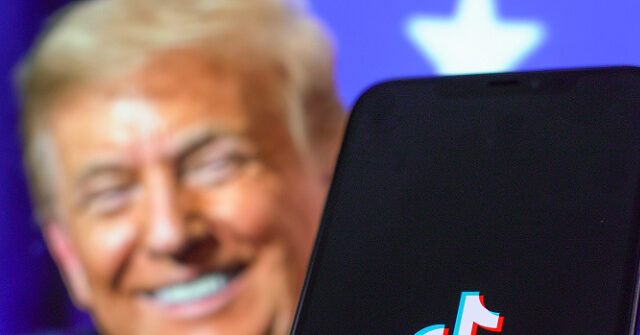In a recent press conference, President-elect Donald Trump expressed a surprising affection for TikTok, recognizing its influential role in his campaign strategy and appeal to the youth vote. Trump’s comment about TikTok followed the looming deadline imposed on its parent company, ByteDance, to sell the app by January 19 or face a potential ban in the United States. This deadline stems from provisions in a $95 billion bill signed by President Joe Biden, which also allocated aid to Taiwan, Ukraine, and Israel, highlighting the complex relationship between national security concerns and popular social media platforms. The urgency of this situation has put TikTok’s future in jeopardy in a rapidly evolving digital landscape.
During the press conference, Trump revealed his belief that TikTok played a significant part in garnering youth support, claiming he won that demographic by 34 points. He credited not just TikTok, but a broader media strategy, including engagement with personalities like podcaster Joe Rogan, who was recommended to him by his son Barron. The president’s acknowledgment of these platforms suggests a strategic understanding of how modern communication tools can impact political campaigns. Trump’s remarks also illustrate a broader trend where social media platforms increasingly become intertwined with electoral politics, reshaping how candidates connect with potential voters.
The context surrounding Trump’s comments includes a recent ruling by the U.S. Court of Appeals for the D.C. Circuit, which upheld the law demanding that ByteDance divest from TikTok, asserting that such a requirement does not infringe upon First Amendment rights. This legal decision underscores the U.S. government’s growing concerns about data privacy and national security, particularly regarding the potential for the Chinese government to access American user data via TikTok. In a political climate marked by increasing scrutiny of foreign technology firms, TikTok stands as a pivotal case in the discussion of privacy, security, and digital liberties in the United States.
As the January deadline nears, the implications for TikTok and its users are wide-ranging. The potential sale of the app or the threat of a ban raises questions about how such measures would affect the millions of American users who utilize the platform for entertainment, communication, and business purposes. It also highlights the precarious position of social media companies in navigating national security concerns while trying to maintain user engagement and market presence. The government’s insistence on regulatory compliance reflects a broader ideological stance regarding data sovereignty and the importance of protecting citizens from potential foreign surveillance.
On a more personal note, Trump’s warm remarks about TikTok may also indicate an attempt to retain favor with younger voters and audiences who have increasingly gravitated toward the platform. Meeting with TikTok’s CEO, Shou Chew, at his Mar-a-Lago estate demonstrates Trump’s willingness to engage directly with influential players in the tech industry. This approach could signal a potential pivot in his interaction with digital platforms, which are essential for engaging and mobilizing support among younger demographics as political campaigns evolve to meet changing communication preferences.
In conclusion, TikTok’s future amid political maneuvering presents a fascinating intersection of technology and politics. Trump’s acknowledgment of the platform’s role in his electoral success shows an evolving understanding of how digital mediums affect public opinion and voter engagement. As both the Biden administration and the courts deliberate over the legalities and implications of TikTok’s operations in the U.S., the outcome will likely set significant precedents for future interactions between government regulation and digital platforms. In this rapidly changing context, the relationship between social media, youth culture, and political strategy will continue to be a pivotal area of interest as the implications of these decisions unfold.

